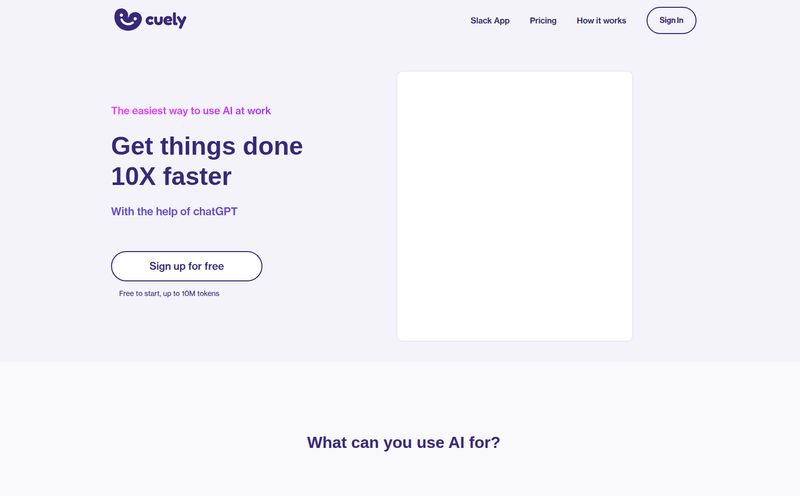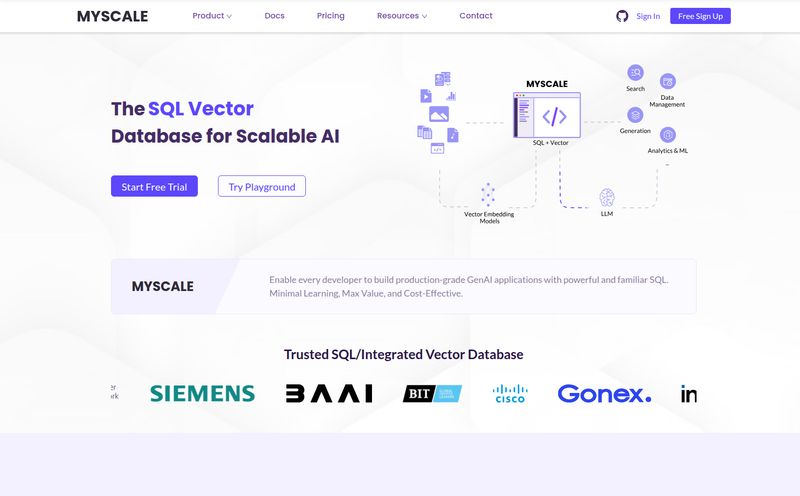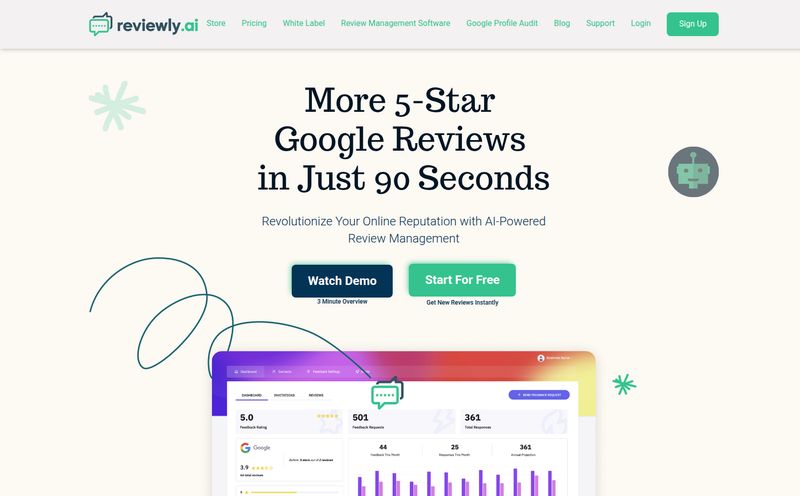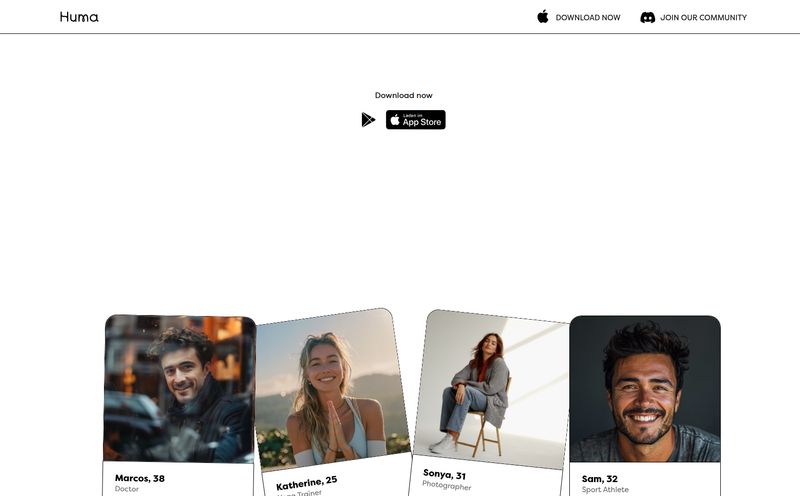As someone who’s been neck-deep in SEO, traffic, and the wild world of online reputation for years, I've seen it all. I’ve seen brands soar because they listened to their customers, and I’ve seen others crash and burn because they treated their reviews section like a digital suggestion box that no one ever checks. The truth is, in our hyper-connected world, the time between a customer having a bad experience and them telling 1,000 of their closest friends on social media is… well, it’s about the time it takes to pull out their phone.
For a long time, we've treated customer feedback as a reactive game. We wait for the 1-star Google review to pop up, then scramble to put out the fire. But what if we could get ahead of it? What if we could turn a complaint into a compliment before it ever goes public? This is the promise of a platform I’ve been looking at recently called Akira. And I have to say, it’s got my attention.
So, What Exactly is This Akira Thing Anyway?
Think of Akira as a central command center for your brand's entire guest experience. It’s not just another review monitoring tool. It's an all-in-one platform designed specifically for businesses with multiple locations – think restaurant chains, retail stores, hotels, you get the picture. It pulls together guest feedback from all over the place (QR codes, surveys, online reviews), helps you manage your reputation, and keeps all your online listings consistent and optimized.
The core idea is to stop letting customer issues fester for days or weeks. Instead of finding out about a problem from a scathing Yelp review a week later, Akira aims to put that feedback directly into the hands of a manager who can fix it, right now. It’s a pretty compelling idea, right?
The High Cost of Silence and Why Speed is Everything
Akira's whole marketing pitch hinges on one simple, brutal truth: speed wins. A delayed response to a customer complaint isn't just bad service; it's a direct hit to your bottom line. When someone has a bad time at your restaurant or store, you have a tiny window to make it right. It's a golden hour, but for customer service, it's more like a golden five minutes.

Visit Akira
If you miss that window, the customer leaves unhappy. They tell their friends. They post a nasty review. The damage multiplies. Akira’s whole model is built to intercept that moment. By giving a guest an easy, private way to report an issue on the spot (like scanning a QR code at their table), you get the feedback immediately. The manager gets an alert. They can go over, apologize, offer a solution, and suddenly, a 1-star review turns into a customer for life. It’s not rocket science, but having a system to actually execute it consistently across 50 locations? That's the tricky part.
A Look Under the Hood at Akira's Features
Okay, so the concept is solid. But what does it actually do? I dug into its main features to see if the engine matches the shiny exterior.
Your All-in-One Guest Experience Hub
The biggest headache for any regional or national brand manager is the sheer chaos of feedback channels. You've got Google reviews, Facebook comments, Yelp, TripAdvisor, direct emails, survey responses… it's a mess. Trying to manage that manually is like trying to herd cats. On fire. Akira’s first big win is unifying all of this. It pulls everything into a single dashboard so you can see the whole picture without having 15 tabs open. For anyone who's ever had to create a monthly report from all those sources, this alone is a massive quality-of-life improvement.
Reputation Management on Autopilot (Almost)
Here’s where it gets interesting. Akira uses AI to analyze the sentiment of feedback. It can tell if a review is positive, negative, or neutral, and even flag specific issues like “cold food” or “rude staff.” It also offers AI-powered response generation. Now, I’m always a little skeptical of AI writing responses. We've all seen those generic, robotic replies that do more harm than good. However, the idea here isn't to replace humans, but to assist them. It gives your managers a solid starting point, saving them time and ensuring a consistent brand voice. I still believe a human should always give it a final polish, but as a time-saver, it’s a huge plus.
Taming the Multi-Location Beast
If you manage more than a few locations, you know the pain of listing management. Ensuring your Name, Address, and Phone Number (NAP) are consistent everywhere, updating holiday hours on 75 different Google Business Profiles… it's a nightmare. Akira provides scalable listing management to push out updates to all your locations at once. This isn't just convenient; it's critical for local SEO. Inconsistent data confuses Google and hurts your visibility. This feature is less about the guest experience and more about the backend SEO work that makes it possible for guests to find you in the first place.
Let's Talk Money: Breaking Down Akira's Pricing
Alright, the part everyone wants to know about. Is it worth the investment? Akira's pricing is a per-location model, which makes sense for their target audience. The more locations you have, the cheaper the per-location cost gets.
| Plan | Price per Location/Month | Best For |
|---|---|---|
| Local | $90 | Up to 10 locations. Good for small, local chains. |
| Regional | $65 | Up to 50 locations. The sweet spot for growing companies. |
| National | $50 | Up to 200 locations. For the big players. |
| Enterprise | Talk to Sales | Unlimited locations with custom needs. |
Frankly, that $90/location for the Local plan might seem steep if you have, say, 8 locations ($720/month). But you have to weigh that against the cost of one lost customer, one viral negative review, or the hours your managers spend trying to juggle this stuff manually. As you scale up to the Regional and National plans, the value proposition gets much, much stronger. It’s a tool for businesses that are serious about scaling their operations and protecting their brand reputation.
The Good, The Bad, and The... Coming Soon
No tool is perfect, so here's my honest breakdown.
The Good Stuff: The unified platform is a game-changer. The focus on immediate internal feedback before it goes public is brilliant. The AI-powered analysis and scalable listing management are genuinely powerful features that solve real-world problems for multi-unit brands.
My Honest Hesitations: The pricing, while logical, could be a barrier for some smaller chains that are just starting to grow. It's an investment. The website also mentions that some features like voice-enabled actions are on the roadmap but not here yet, which is a bit of a bummer in an increasingly voice-search world. Finally, it requires integration with your existing systems, which isn't a flaw, but it is a setup hurdle that businesses need to be prepared for. It's not quite 'plug and play'.
So, Who Is Akira Really For?
Let's be clear: this isn't for the solo-preneur coffee shop owner or a single food truck. You could probably get by with native tools for that. Akira is purpose-built for the COO or Director of Operations of a brand with 10, 50, or 200+ locations who is losing sleep over brand consistency and the risk of a reputation crisis. It's for businesses where the cost of a damaged reputation across an entire region is far, far greater than the monthly fee for a platform like this. If you're at the point where you can't personally oversee every customer interaction anymore, you need a system. Akira is that system.
Frequently Asked Questions about Akira
- How hard is it to set up Akira?
- It does require some setup and integration with your existing systems. However, their website implies they have an onboarding team to help you through the process, especially for the larger plans. It's not a simple sign-up-and-go tool, it's more of an enterprise solution.
- Are the AI-generated responses good enough to use?
- In my experience with similar tools, AI responses are a fantastic starting point. They save a ton of time and ensure you don't forget to reply. But I would always, always recommend having a human manager review and personalize it before hitting 'send.' Authenticity still matters.
- Can I use Akira for just one or two locations?
- You could, but the pricing is structured to benefit multi-location businesses. At $90 per location, you'd want to be sure you're using all its features to get your money's worth. The real power and cost-effectiveness unlocks as you add more locations.
- Do I have to sign a long-term contract?
- The FAQ on their pricing page mentions that their plans are billed yearly, so you are making a commitment. However, they also say they don't require contracts that lock you in, so it seems you can cancel, you just pay for the year upfront. It's best to clarify this with their sales team.
My Final Take on Akira
In the constant battle for customers, online reputation isn't just a small skirmish; it's the main front. Tools that help you manage that battle are no longer a luxury, they're becoming a necessity. Akira strikes me as a really smart, focused platform that understands the specific pain points of multi-location businesses.
It’s not trying to be everything to everyone. It’s a specialized weapon for a specific kind of war. If your brand is juggling multiple locations and you're struggling to keep your customer experience consistent and your online reputation spotless, Akira is definately worth a serious look. It might just be the command center you've been looking for.



